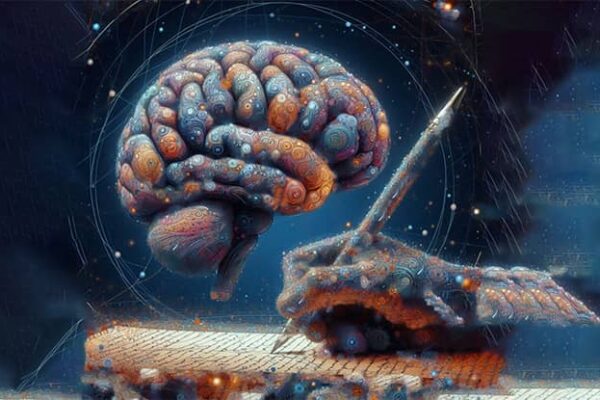Holotropic Breathwork is an effective practice of consciousness transformation, based on intense breathing combined with a special atmosphere and musical accompaniment. This method, developed by Czech psychiatrist and psychologist Stanislav Grof and his wife Christina Grof, is aimed at expanding consciousness and accessing the deeper layers of the psyche.
The word “holotropic” comes from the Greek words “holos” (whole) and “trepein” (to move towards something) and means “oriented towards wholeness.” Thus, Holotropic Breathwork is aimed at achieving an integrated state of consciousness in which a person can experience deep unity with themselves, others, and the universe.
The concept of Holotropic Breathwork dates back to the 1970s when Grof worked with LSD and other psychedelic substances for psychotherapeutic purposes. At that time, these substances were used in controlled settings to facilitate access to unconscious processes and overcome psychological barriers. However, after the prohibition of psychedelics, Grof began searching for alternative ways to achieve altered states of consciousness. As a result of years of research and experimentation, the Holotropic Breathwork method was born.
The main goal of Holotropic Breathwork is to provide people with the opportunity to experience profound transformative states of consciousness, which promote personal growth, healing of emotional traumas, deepening self-awareness, and spiritual development. According to Stanislav Grof himself, Holotropic Breathwork “opens access to the wholeness of human experience on many levels—physical, emotional, intellectual, karmic, and transcendent.”
People who practice Holotropic Breathwork report numerous benefits, including reduced stress, anxiety and depression, improved relationships and creative abilities, increased self-esteem, as well as achieving a deeper understanding of the meaning of life and a sense of connection with all of existence.

The History of Holotropic Breathwork
Although Holotropic Breathwork was officially developed by Stanislav Grof and his wife Christina in the 1970s, its roots go much deeper into human history. Many cultures and traditions have long used various forms of intense breathing to achieve altered states of consciousness and spiritual goals.
For example, hyperventilation practices were common among the indigenous peoples of North and South America, such as the Navajo and Maya. They used rhythmic, accelerated breathing in rituals, healing ceremonies, and spiritual journeys.
In yoga and Buddhist traditions, there were also various breathing techniques (pranayamas) aimed at purification and expanding consciousness. Practices like bhastrika (breath of power) and kapalabhati (skull cleansing breath) included cycles of intense breathing that could induce altered states.
In the Sufi tradition of Islamic mysticism, forms of ecstatic breathing, known as “Zikr” or “Halvet,” were practiced. During these rituals, dervishes used repetitive cycles of rapid breathing to achieve states of trance and unity with the divine.
Thus, Holotropic Breathwork, developed by Grof, drew on ancient traditions and the experiences of many cultures, adapting them to modern conditions and integrating them with the achievements of Western psychology and consciousness studies.

Holotropic Breathwork: Technique and Principles
The process of Holotropic Breathwork is based on physiological and psychological changes triggered by intense breathing. During accelerated breathing, complex biochemical reactions occur in the body, leading to an increase in carbon dioxide levels in the blood and a change in the oxygen-carbon dioxide balance in the body’s tissues.
These changes cause a kind of “oxygen starvation” of cells and tissues, which stimulates the release of various biologically active substances, such as adrenaline, endorphins, and enkephalins. These substances act as natural psychedelics, causing changes in brain function and increasing the sensitivity of the central nervous system.
In particular, the increase in carbon dioxide levels in the blood leads to the dilation of cerebral vessels and an increase in blood flow to the brain. This, in turn, improves the brain’s supply of oxygen and nutrients and activates various areas of the cerebral cortex.
In addition, intense breathing stimulates the release of endorphins, natural opioid neuropeptides with pain-relieving, calming, and euphoric effects. Endorphins may also play a role in altering perceptions of time and space, as well as in the emergence of visual images and experiences.
Adrenaline, released during Holotropic Breathwork, activates the sympathetic nervous system, increasing heart rate, blood pressure, and overall physiological activation. This heightened state can enhance the intensity of experiences and amplify the effects of Holotropic Breathwork.
In addition to physiological changes, Holotropic Breathwork also affects the psychological state of a person. The altered gas balance in the blood and the release of biologically active substances can cause changes in perception, thinking, and emotional state.
Some people describe the state achieved during Holotropic Breathwork as one of heightened awareness, clarity, and depth of perception. Others report vivid images, bodily sensations, or emotional experiences that may be associated with personal biography, perinatal events, or transpersonal aspects of existence.
A key component in intensifying and directing Holotropic Breathwork is specially selected music with specific rhythms and frequencies, which synchronize brain hemispheric activity and encourage deeper immersion into experiences. Visual stimuli, such as mandalas, paintings, or video projections, can also serve as a support for visualization and catalyze various images and symbols.
Thus, Holotropic Breathwork represents a complex process that combines physiological, psychological, and spiritual aspects of human experience. Its mechanism of action is based on changes in brain function, the nervous system, and the release of various biologically active substances, which together lead to an altered state of consciousness and open access to the deep layers of the psyche.

Types of Experiences in Holotropic Breathwork
The experiences that arise during Holotropic Breathwork can be diverse and multifaceted. Stanislav Grof divided them into four main categories: physiological, biographical, perinatal, and transpersonal. However, within each category, there are many shades and variations of experiences.
Physiological Experiences
During the practice of Holotropic Breathwork, diverse physical sensations may arise, such as tingling, pulsations, warmth or cold spreading through different parts of the body, which are considered part of the process of purification, transformation, and self-discovery.
Some people note intensified breathing, accompanied by an accelerated heart rate and increased sweating. Others may experience shaking or tremors in various parts of the body.
These physiological experiences are the body’s response to changes in breathing and oxygen levels, as well as a reflection of emotional and mental states. They may be accompanied by deep emotions and visualizations, creating a complex experience during the process of Holotropic Breathwork.
Physiological experiences during Holotropic Breathwork can vary for each person and differ from session to session. They are usually considered a natural part of the process and serve as a valuable source of understanding and exploring the inner world.
Biographical Experiences
Biographical experiences are related to memories and events from a person’s personal life. They can include scenes from childhood, relationships with parents and other significant figures, traumatic or joyful episodes, as well as the awareness and working through of emotionally significant conflicts and behavioral patterns.
Some people experience biographical episodes in chronological order, as if watching a film of their life. Others note isolated fragments or key moments that have particular significance for their personal development or emotional state.
At this level, Holotropic Breathwork helps to release old emotional blocks, gain new insights into life events, and integrate fragments of experience that were previously repressed or ignored. This often leads to relief, reconciliation, and healing of past traumas.
Perinatal Experiences
Perinatal experiences are related to the birth process and the time spent in the mother’s womb. They may reflect various stages of the birth process, such as sensations of pressure, confinement, suffocation, struggle for survival, and then release and birth into a new world.
On a symbolic level, perinatal experiences are often associated with overcoming difficulties, stress, the destruction of old structures, followed by rebirth or transition to a new level of being. They can become a powerful catalyst for transformation and personal growth, helping a person to recognize and resolve deep psychological conflicts and blocks.
Stanislav Grof identifies four key matrices of perinatal experiences:
- Matrix of retention (first stage of labor): feelings of confinement, limitation, hopelessness.
- Matrix of struggle (second stage of labor): states of struggle, aggression, resistance.
- Matrix of death and rebirth (transitional stage): experiences of dissolution, death, and subsequent rebirth.
- Matrix of birth (final stage of labor): feelings of release, relief, joy, and new possibilities.
Transpersonal Experiences
Transpersonal experiences go beyond individual experience and include experiences related to other beings, cultures, mythological images, archetypes, and spiritual states.
People may experience a sense of unity with all of existence, feel connected to nature, the cosmos, or divine energies. They may transform into various animals, historical figures, or even inanimate objects. Some experience encounters with spiritual entities, angels, or extraterrestrial civilizations.
Transpersonal experiences are often described as a sense of dissolving the individual “I” and merging into deeper layers of reality. They can lead to fundamental shifts in understanding the nature of being, the meaning of life, and one’s role in the universe.
It is important to note that these categories of experiences are not strictly separated, and they often intertwine and combine in various ways during a session of Holotropic Breathwork. Moreover, the same experience can have different levels of interpretation and meaning for different people, depending on their personal experience, cultural context, and level of consciousness development.
Understanding and integrating the experiences that arise during Holotropic Breathwork plays a key role in making the most of their transformational potential. This often requires further work through psychotherapy, creative expression, spiritual practices, or other methods of integration.

Holotropic Breathwork Session
A session of Holotropic Breathwork is conducted in a specially equipped space, where a safe and supportive atmosphere is created for participants. The setting should facilitate full immersion in the process and minimize potential distractions.
The room is usually arranged with soft lighting, candles, or lamps to create a dim and relaxing atmosphere. Mats or carpets are laid on the floor, where participants can comfortably position themselves during the session. A powerful sound system is also installed to play specially selected music, which plays a significant role in the process of Holotropic Breathwork.
Before the session begins, participants go through a preparatory phase, including warm-up exercises, instruction, and setting intentions. They are introduced to the basic principles of Holotropic Breathwork, safety rules, and the experiences they may encounter. They also define their personal goals for the upcoming session, which helps them focus and prepare mentally for the process.
Participants then lie down on mats or carpets in a comfortable position, usually on their backs or sides. Pillows or blankets may be provided for added comfort. After this, the music begins, setting the rhythm for breathing.
A typical Holotropic Breathwork session lasts from 2 to 4 hours and consists of several breathing cycles, with breaks in between for rest and integration of the experiences. During these breaks, participants can draw, write in journals, or simply rest in silence.
A qualified facilitator is present during the session to ensure participants’ safety and provide necessary support. The facilitator may offer breathing exercises, give instructions, or simply create space for self-expression and processing of experiences.
After the session is completed, participants gather together and share their impressions and experiences in a group. This process of sharing helps them better understand and integrate the insights they gained and fosters a sense of community and support.
The integration of experiences acquired during Holotropic Breathwork is an important part of the process. It may involve various artistic practices such as drawing, painting, or sculpting. Visualization and creative expression help solidify and deepen the awareness of experiences on both physical and emotional levels.
Journaling is also a valuable tool for integrating the experience. By writing down their feelings, visions, and insights, participants can better understand their significance and impact on their lives.
Some people find it helpful to continue working through their experiences in individual or group psychotherapy. This allows them to explore the themes and issues that arose in greater depth, guided by a psychologist.
Additionally, many participants of Holotropic Breathwork turn to various spiritual practices, such as meditation, yoga, or energy work, to deepen their understanding and expand the awareness they achieved during the session.
Regardless of the chosen method, it is important to devote enough time and attention to the integration process, as it plays a crucial role in reinforcing the positive changes and transformations initiated by Holotropic Breathwork.

Potential Risks and Contraindications
Despite the many potential benefits, Holotropic Breathwork is not entirely risk-free and has some contraindications. It is therefore important to understand the potential risks and follow all necessary precautions.
Psychological and Emotional Risks
One of the most significant risks of Holotropic Breathwork is the possibility of experiencing intense emotions, such as fear, anxiety, anger, guilt or depression. Some people may recall painful memories or traumatic experiences from the past, which can temporarily exacerbate existing psychological issues.
Additionally, Holotropic Breathwork can provoke psychotic states or worsen existing mental disorders in people predisposed to them. For this reason, it is recommended to carefully assess the mental health of participants before the session and exclude those with active psychosis, severe forms of schizophrenia, bipolar disorder, or other serious mental illnesses.
Physical Risks
The physical risks of Holotropic Breathwork are associated with changes in breathing and cardiovascular functions caused by intense breathing. These include fainting, dizziness, nausea, and muscle cramps.
Holotropic Breathwork is contraindicated for people with serious cardiovascular conditions, such as coronary artery disease, arrhythmias, or uncontrolled hypertension. It is also not recommended for individuals with anemia, epilepsy, severe forms of asthma, or for pregnant women.
Social and Legal Risks
In addition to physical and psychological risks, there are also potential social and legal risks associated with Holotropic Breathwork. In some countries or regions, this practice is considered non-traditional or even prohibited, which may lead to legal consequences.
Moreover, the experiences that arise during Holotropic Breathwork may conflict with cultural norms or religious beliefs of some individuals, which can sometimes lead to social disapproval or even alienation from certain groups or communities.
It is also important to consider that Holotropic Breathwork can have a profound impact on a person’s worldview and value system, which may result in conflicts with existing social roles and relationships.
Minimizing Risks
To minimize risks, it is crucial to create a safe and controlled environment with the involvement of a qualified facilitator, who can provide the necessary assistance and support in the event of unwanted reactions.
Before the session, participants undergo a thorough screening process to assess their physical and mental condition. Individuals with certain health conditions or special needs are advised to refrain from participating or consult a physician.
During the session, strict safety protocols are followed. Participants are always monitored by the facilitator, who keeps track of their condition and can intervene if necessary. It is also recommended that qualified medical personnel be present in case of serious complications.
Adhering to all necessary precautions, professional guidance, and creating a safe environment are key factors in minimizing risks and ensuring that participants reap the maximum benefit from Holotropic Breathwork.

Application of Holotropic Breathwork in Various Fields
Despite potential risks, Holotropic Breathwork has found its application in various areas, becoming a valuable tool for personal growth, healing, creativity, and spiritual development.
- Psychotherapy and Personal Growth. Holotropic Breathwork is used as an effective tool for working with psychological trauma, addictions, emotional difficulties, and self-awareness. It helps to reveal deep layers of the psyche, understand the roots of problems, and find resources to overcome them.
Many psychotherapists and counselors integrate Holotropic Breathwork into their practice, combining it with other methods such as Gestalt therapy, Acceptance and Commitment Therapy (ACT), body-oriented therapy, and others.
- Spiritual Practices and Self-Exploration. Due to access to transpersonal experiences, Holotropic Breathwork can contribute to spiritual growth, expanding awareness, and deepening the understanding of the nature of reality.
Some people use this practice as a means of self-discovery and exploring questions related to the meaning of life, wholeness, unity with all beings, and transcendent states of consciousness.
- Creativity and Art. Many artists, musicians, writers, and creative individuals use Holotropic Breathwork as a source of inspiration and access to new ideas, images, and states of perception.
The altered states of consciousness achieved through Holotropic Breathwork can help overcome mental blocks, expand creative potential, and open new perspectives for self-expression.
- Addiction Work. Holotropic Breathwork is also used in rehabilitation and addiction therapy programs, such as those for alcoholism, drug addiction, and other forms of addictive behavior.
It can help participants recognize the deep causes and emotional roots of their addiction, as well as find inner resources and motivation for healing and change.
- Consciousness Research. Holotropic Breathwork attracts the attention of scientists and researchers studying the nature of consciousness, its altered states, and the connection between the body and mind.
It provides a unique opportunity to study the subjective experiences of people in states of expanded consciousness and better understand the neurophysiological and psychological processes underlying them.
Regardless of the field of application, Holotropic Breathwork opens the path to deep transformation and expands the boundaries of perception. However, it is important to remember that it is a powerful tool that requires respectful and cautious treatment, as well as adherence to all necessary safety measures.

Scientific Research and Evidence of Holotropic Breathwork’s Effectiveness
Over the past decades, numerous scientific studies have been conducted, exploring the effects and potential benefits of Holotropic Breathwork. The results of these studies demonstrate the positive impact of the practice on psychological and emotional well-being, as well as its potential for therapeutic purposes.
One early study conducted in 1993 showed that participants in Holotropic Breathwork sessions experienced a significant reduction in levels of anxiety, depression, and somatization of symptoms compared to a control group. In addition, participants reported improvements in self-esteem and interpersonal relationships.
Subsequent studies have revealed positive effects of Holotropic Breathwork in the treatment of post-traumatic stress disorder (PTSD). Participants suffering from PTSD noted a significant reduction in symptoms after undergoing several Holotropic Breathwork sessions.
A number of studies also point to the potential of Holotropic Breathwork in addressing various psychological issues, such as eating disorders, chronic pain, and even some forms of psychosis.
In a 2018 study, it was found that Holotropic Breathwork contributed to reducing stress levels and improving the quality of life in people with chronic diseases, such as multiple sclerosis and fibromyalgia.
Interesting results have also been obtained in studies examining the impact of Holotropic Breathwork on creativity and brain neuroplasticity. Some research has shown that the practice of Holotropic Breathwork may stimulate neurogenesis (the formation of new nerve cells) and enhance connections between different areas of the brain, which increases creativity and cognitive flexibility.
However, despite the promising results, many experts call for further large-scale studies with more rigorous controls and more representative samples. They emphasize the need to study the long-term effects of Holotropic Breathwork, as well as a better understanding of its mechanisms and potential risks.
In addition, there is a need for research comparing the effectiveness of Holotropic Breathwork with other methods of therapy and personal growth, in order to determine its relative advantages and disadvantages.
Nevertheless, existing scientific data indicate the significant potential of Holotropic Breathwork in the areas of psychological and spiritual development, as well as for therapeutic and research purposes. Continued research in this field could lead to a deeper understanding of the nature of consciousness and new approaches to healing and personal growth.

Conclusion
Holotropic Breathwork represents a multifaceted practice that opens the path to deep transformations of consciousness and personality. Integrating elements of breathing techniques, music, and visual stimuli, it creates a unique experience capable of awakening hidden resources of the psyche and expanding the boundaries of perception.
The experiences that arise during Holotropic Breathwork can become a catalyst for healing psychological trauma, developing self-awareness, spiritual growth, and creative expression. They help to recognize and overcome deep emotional blocks, gain new understanding of life events, and integrate fragments of experience that were previously repressed or ignored.
However, it is important to understand that Holotropic Breathwork is also associated with certain risks and contraindications, requiring adherence to safety precautions and qualified facilitation.
Holotropic Breathwork opens exciting opportunities for self-exploration, healing, and spiritual development. But, like any powerful practice, it requires a cautious and responsible approach, based on a deep understanding of its principles and potential benefits. Only in this way can Holotropic Breathwork become a safe and effective tool for unlocking inner potential and achieving a holistic state of consciousness.
Recommended Reading
- “Holotropic Breathwork: A New Approach to Self-Exploration and Therapy” – by Stanislav Grof and Christina Grof. This book is the foundational work on Holotropic Breathwork, written by the creators of the practice. It describes the technique in detail and provides examples of therapeutic sessions.
- “The Holotropic Mind: The Three Levels of Human Consciousness and How They Shape Our Lives” – by Stanislav Grof and Hal Zina Bennett. In this book, the authors delve into the theoretical and philosophical aspects of Holotropic Breathwork, explaining its connection to altered states of consciousness and spiritual experiences.
- “Exploring Holotropic Breathwork: Selected Articles from a Decade of the Inner Door” – by Kylea Taylor. This book compiles 144 field reports from the widely used practice of modern, non-drug work with altered states of consciousness. These are reports from professionals in the medical, academic, psychotherapeutic, and spiritual fields, trained in Holotropic Breathwork by Stanislav Grof.




